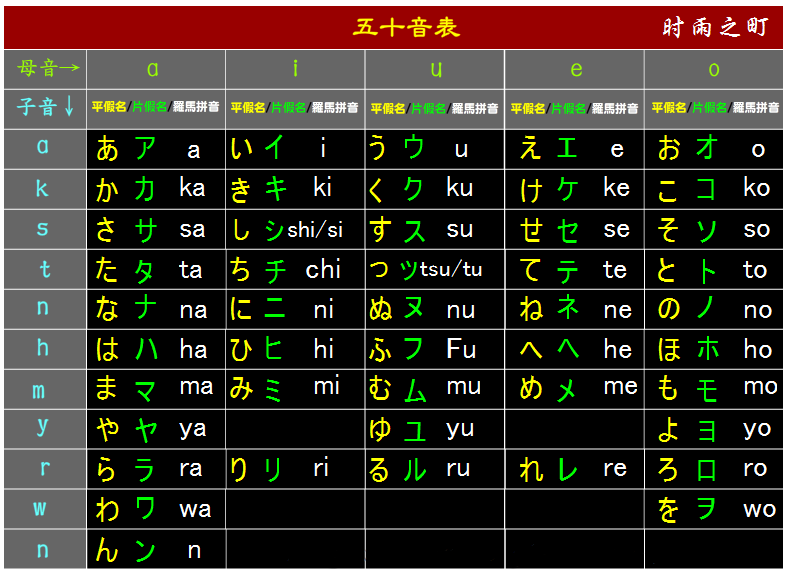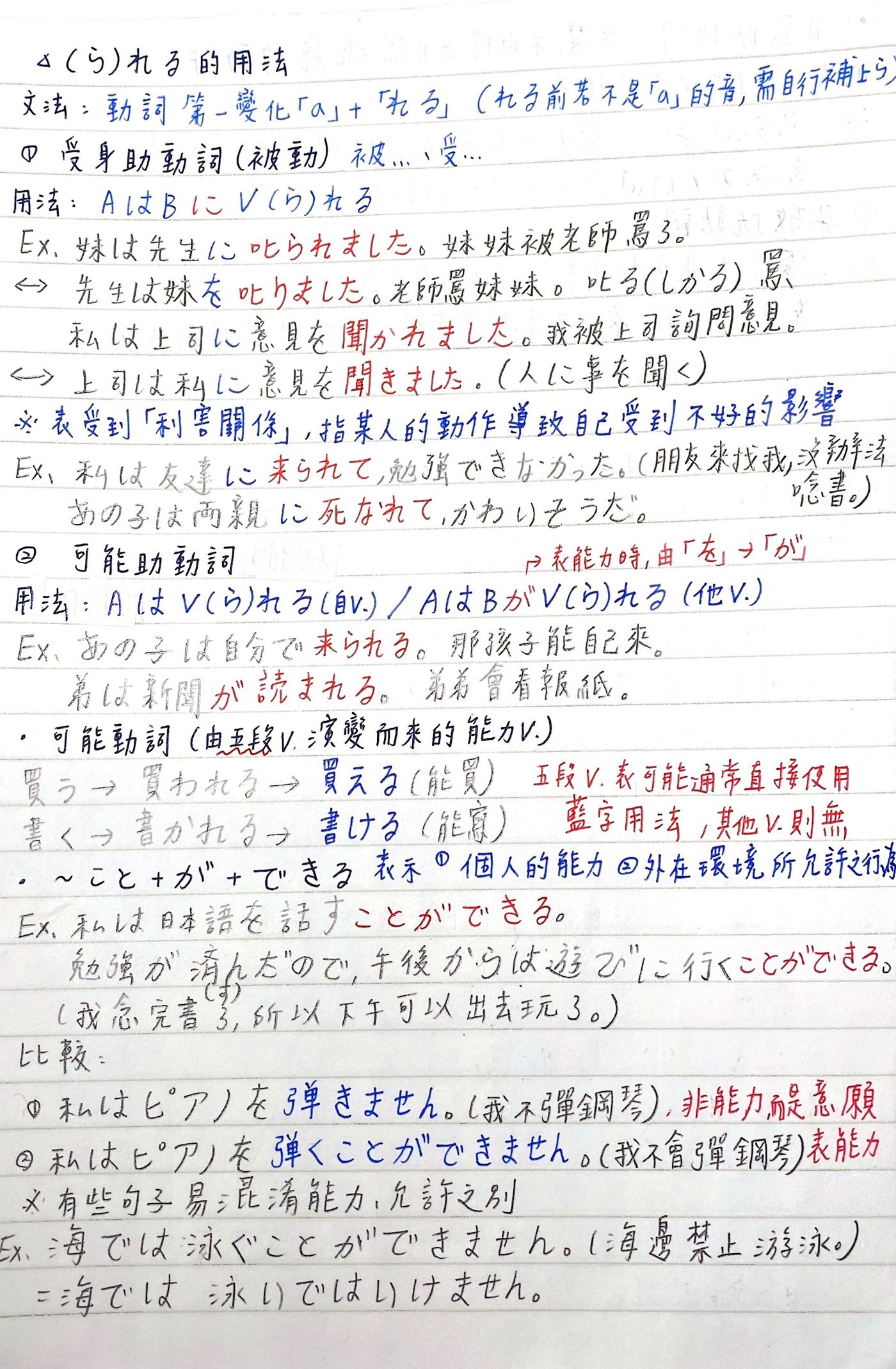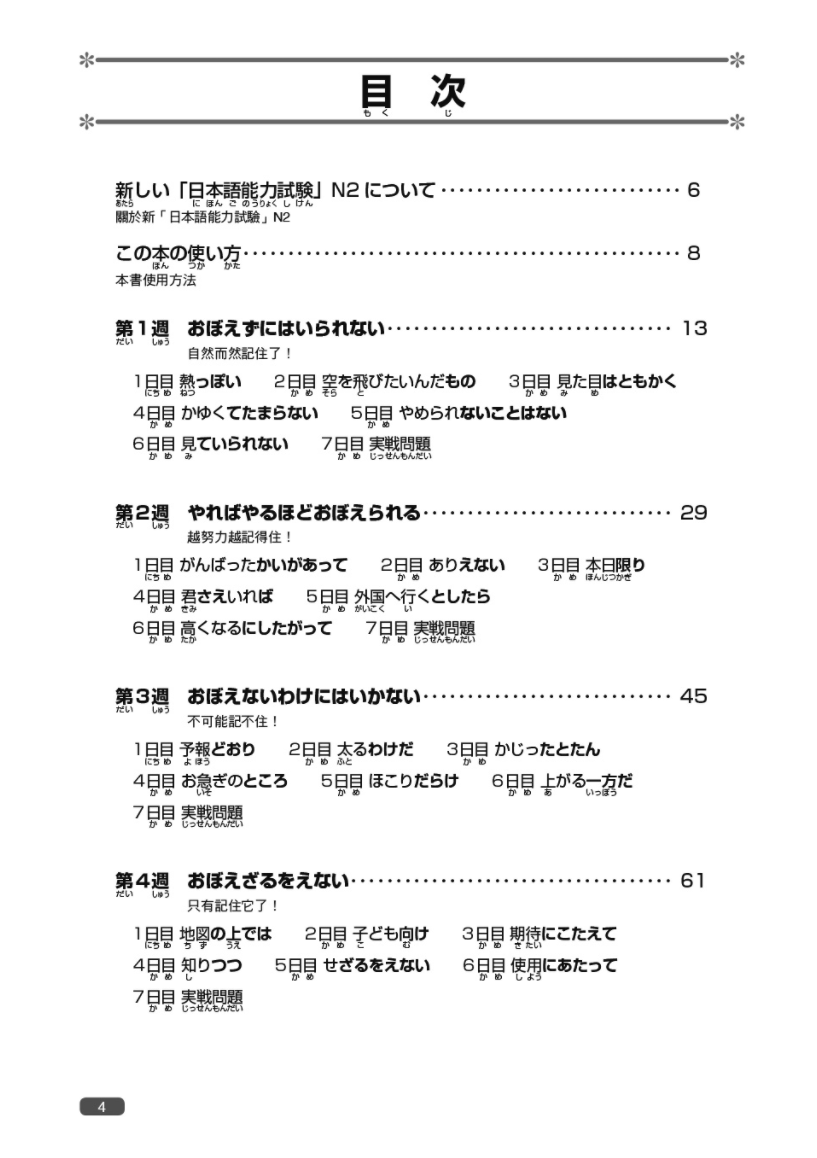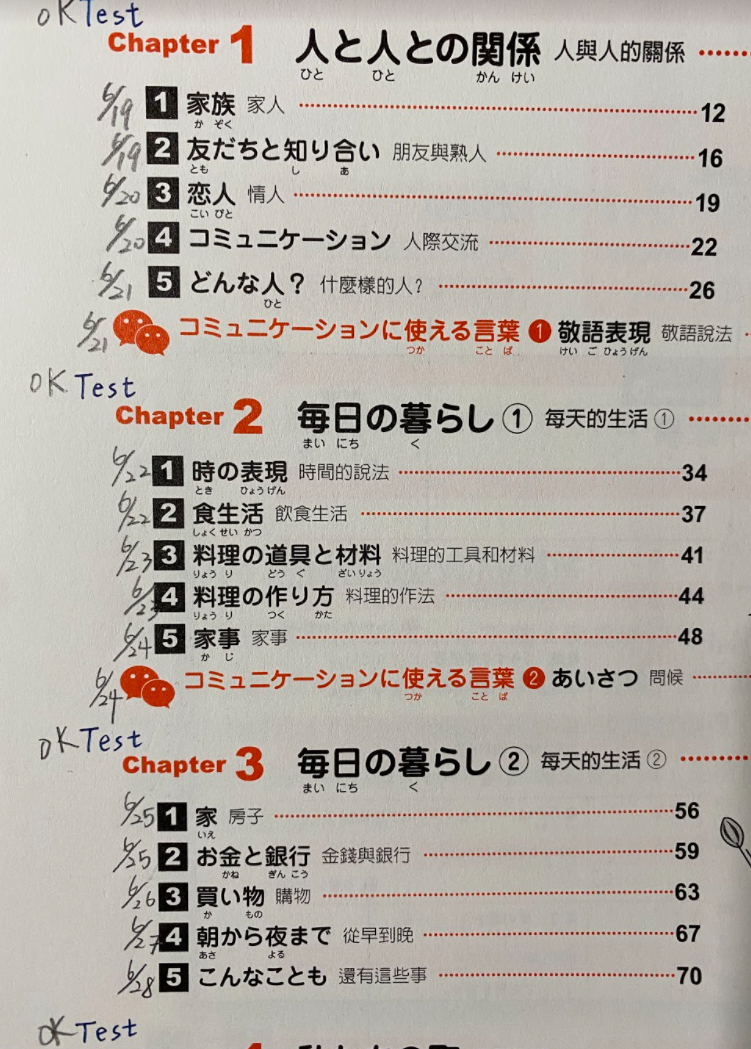
台灣人、留日大學生、工程專業 熱愛閱讀、致力於透過淺白的方式傳遞知識 文章第一時間會更新在我的網站上,歡迎追蹤及訂閱電子報 網站: https://shepherblog.com 卡稱: Shepher 希望能透過這個平台與世界交流、也歡迎與我分享你的想法 : ) -
📚 Daily inspection N4👉🏻N2 one-time qualified preparation method (Part 1)
This N4→N2 qualified experience sharing is mainly written for the students who are about to take the JLPT exam, if you are
- I must pass the N2 exam for the first time! ➡This sharing is just for you!
- You who have challenged N2 in the past, but unfortunately failed ➡ on the battlefield, you may be able to get some new ideas in this sharing, and make persistent efforts!
- I just want to take a test. Have you passed the test? ➡ Although passing the test is not your primary goal at present, you are welcome to browse the following content. The "reverse learning method" mentioned in it is not only suitable for preparing for the daily test. !
Then before entering the text, attach the N2 transcript to increase the credibility~

The preparation experience will be divided into two parts: the first part and the next part. The first part will mainly introduce my Japanese learning process, such as my learning progress at various stages and the books I used. Then I will introduce the reverse push learning method I used during the sprint period, which is also the main focus of this article! As for the next part, I will focus on some reference books and online resources suitable for self-study, as well as my experience and methods of using them.
<Part 1>
📍 Learning Motivation
It's not about having the perfect plan, it's about having a good reason to get there
📍 Timeline
✏ Early stage (2018.12~2019.07)
✏ A little serious period (2020.05~2020.09)
✏ Determined to study hard (2021.06~N2 before exam)
📍 Establish a reading plan and establish a daily habit
Introduction and experience sharing of inverse learning method
<Part 2>
📍 Online resource recommendation, book sharing
Integrate all-encompassing learning resources to make you even more powerful on the road of self-study
📍 Auxiliary APP recommendation, the importance of archaeological questions
Archaeology Questions Above Mock Test Questions
💭 Learning Motivation
When I tried to recall the biggest difference in my mentality between N4 and N2, I found that I lacked a clear goal before preparing for N4. At that time, I just wanted to understand the content of the Japanese version of the manga first, and then I decided to start learning Japanese of. For me at the time, the test was just because I didn't pass the test and wanted to try it.
Even if I don't pass, it won't affect me.
Please note that if you are like me at the time, you are taking the test with the idea that you are not bad , or have this idea flashed in your mind for a moment, you must be honest about what you are preparing for (or about to prepare for) ) test is actually irrelevant to you. In the days to come, not only will you not take this test seriously, but you will not concentrate on preparing for it, because you have already prepared a way for yourself to find a way for yourself. Good excuse for not going all out.
With such an excuse, it's hard to prepare for any verification test. Imagine that when you are preparing for the college test, if you always think that if you fail anyway, there will still be a test, will you still spend 100% of your energy on preparing? ?
It is undeniable, of course, that some people can get pretty good results even when they take the test with a relatively relaxed attitude. Excessive pressure may also have the opposite effect, making us too worried and unable to continue to act...

Therefore, I suggest that you write down three items here, your own motivation for participating (○○ series), taking me as an example, I listed at that time:
I want to pass the N2 in December once because...
- Part-time jobs in Japan and full Japanese courses in schools usually require foreigners to have Japanese proficiency above N2
- According to the JLPT grading certification benchmark, passing N2 means that in addition to the Japanese used in daily life, you can also understand Japanese in a wider range of situations, such as being able to read, understand most of the news, and be able to read books on general topics, etc. It is an important ability indicator for me who wants to receive untranslated Japanese news at the first time.
- Passing N2 can be listed as one of the personal special skills, which is very good to show off (even this reason is completely OK!)
After writing, it is recommended to stick these three motivations on the desk in a conspicuous place where you can see them at any time. When you encounter difficulties or the mock test is not satisfactory, look up and see why you made up your mind to pass the daily test!
🕐Timeline
This part will be divided into three paragraphs to introduce the history (?) of my preparation for the daily inspection. You can explore the process of changing my reading method.
✏ Early stage (2018.12~2019.07)
My level during this period: N5(?)
✅ Listening, speaking, reading and writing Hiragana and Katakana
✅ Begin to read signs written in pseudonyms, product labels, comics...etc.
❎ No way to understand what most pseudonyms mean
❎ Cannot read Kanji in Japanese
How to memorize the fifty syllables?

Memorizing the fifty syllables is probably the first difficulty that every Japanese beginner will encounter, but as long as you get over this cut, I believe you will be very happy because you can read the cute Kana (flat) pseudonym on the package ~! My suggestion is as follows:
1. Don’t be greedy, just recite ten (flat) pseudonyms every day
Ten sounds like a small number, but in fact, there are only 92 pseudonyms in daily use, so if you memorize it carefully, you can complete it in less than 10 days.
As for whether or not to memorize these ten in the order of the fifty syllables, it is up to you to hug them! Friends who have memorized one round may find that there are several pseudonyms that look alike, such as ツ (tsu) and shi (shi), ン (n) and ソ (so), etc. In order to distinguish them well, it will be faster to recite them together Master the subtle differences between them!
How to learn the fifty syllables? Japanese 50 tone teaching full version
2. Copy the pseudonym on a small note and carry it with you
Copy the ten pseudonyms you decided to memorize in step 1 on a note that you can carry with you, and take them out and memorize them when you are free (waiting for the bus, waiting for a meal, meeting in the morning, going to the toilet (?)…)!
3. No matter what it means, try to pronounce it when you see a pseudonym.
Although you are not necessarily in Japan reading this article, our lives are actually full of Japanese, whether it is the labels behind Japanese-made items or the Japanese-style signs, they are all good teaching materials for practice (although The meaning of some signboards is super weird when translated into Chinese...). During this period, don't delve into the meaning of the word, but focus on how to pronounce it. It's not too late to memorize the part of the single word after you are familiar with the fifty syllables!

✏ A little serious period (2020.05~2020.09)
My level during this period: N4~N5
✅ Master N5~N4 (part*) grammar
The place to learn N5 grammar by yourself _ Shigure no Town
* Shiyu website has not updated all N4 grammars at that time
✅ Everyone's Japanese Volume 1 (completed by self-study)
✅ Everyone's Japanese Volume 2 (completed during tuition)
Spoken Japanese tuition classes
During this period, I actually went to a Japanese cram school for two days a week. At the beginning, I took a group class, the teacher was Japanese, and the class was in everyone's Japanese . At that time, I had already completed the first volume of self-study, so the tutoring started from the second volume.
However, although the teacher will also teach grammar in class, in fact, during this period, I have made the most progress in oral speech . The advantage of group classes is that students can practice the dialogue in the text with each other, and the teacher often makes more changes for us to practice.
After that, I switched to a one-on-one tutoring class. The teacher is also Japanese, and the class materials are also Japanese. However, I told the teacher before the class that I wanted to focus on speaking, so there was a lot of time in the class. While chatting with the teacher~ (the teacher tries hard to understand what I want to express every time ><) In addition, every time the cram school takes the single-word quiz, I have accumulated a lot of N4-5 level words.
However, in summary during this period, there is no systematic grammar study, and the accumulation of words is also very slow. After all, most of the time is spent on speaking and speaking, and I want to say that I can use it immediately when I go to Japan (I didn’t expect that I didn’t go to Japan later). (˘・_・˘)).
✏ Determined to study hard (2021.06~N2 before exam)
For me who plan to apply for a job in Japan in the future, it is necessary to obtain an N1 certificate, and it is also a matter of time to prepare for the daily inspection. But the inertia of human beings is like this. If things are not urgent to a certain extent, they will not start to act... I only seriously considered after seeing many students in the same class passing the daily inspection one after another, and their inner competitiveness was stimulated. Are you going to prepare for a daily inspection?
In addition, since the daily inspection certificate is not valid , once you successfully pass the test, the badge that has passed the ○○ test will always be with you. I evaluated my time, and taking the online course at home actually gave me a lot of free time (please don't assume that the people taking the online course are busy... The amount of homework we have to pay is said to be normal Under the condition of double QQ). Taking advantage of the lightness of my sophomore year, I resumed my Japanese textbooks, started self-studying from Shigami nocho N4 grammar, and watched the YouTube videos of Mr. Koujin to assist in learning, and aimed to pass N3 in July (yes, I was at that time.) I plan to sprint from N4 to N3 in one month), but because of the epidemic, the July exam was cancelled, so I decided to directly challenge N2 (after all, only N3 certificate can't do anything), and I started to face university courses, While preparing for the daily routine of the verification test.
My level during this period: N4~N2
✅ Completed Shigure's N4 grammar (Shigure's N4 grammar)
✅ Export Jen N3 grammar complete


*The following books will be introduced in detail in <Part II>
✅New daily inspection strategy N2: Grammar completion
✅New daily inspection completes monolingual N3 and N2 (once a day)
✅New daily inspection completes 500 questions N3 and N2
✅N2 : Chinese characters and vocabulary (complete vocabulary, half of Chinese characters)
✅New daily inspection N3 standard mock test questions (completed in four rounds)
✅ Previous N2 exam questions from 2013.7 to 2020.7 (13 times in total, 2015 was inexplicably skipped by me XD)
Although the time until the exam is really limited, I still take a steady and steady study method, and then I will share with you what reading method I use!
✍🏻 Establish a reading plan and establish a daily habit
reverse learning
This study method is what I learned from the book "The Strongest Reading Skills for Medical Students of Dongda University to Pass the Judicial Exam in One Time: The Reverse Pushing Study Method for Lifetime Use ". And I bought this book because I was obsessed with a Japanese program "Equation Todai", and the author of this book, Gento Kono, was one of the guests!
Whether you're preparing for an upcoming exam (next week's class test, mid-term exam), or a big exam that requires a long battle (various tests, college entrance exams), the reverse learning method is very useful for planning and scheduling. A good tool, let's take a look at the actual operation method of the inverse learning method!
Five steps
1. Know your goals and set specific milestones
The first step, continuing my concept in the "Motivation" section, is having a specific end goal that is most important when planning.
❗ It is best to only list "one" goal at this step, so as not to obscure the direction of future preparations.
My example:
🎯 Pass the N2 Japanese Language Proficiency Test in December
2. Decide what you want to do before reaching the milestone
This step is mainly to list the efforts required to achieve the final goal, including which reference book to read, what network resources to use, and solutions when encountering difficulties, all of which can be combined in this step. Decide.
Therefore, in order to pass the check, I must
- Familiar with N2 and N3 range grammars
Reference books used: ○○N3 grammar, ○○N2 grammar
- Memorize words in the range of N2 and N3
Word book: ○○N3 word, ○○N2 word, N2 word test
- practice archaeology
Year of archaeology: 2013.7~2020.7
- training listening
Listen to Japanese radio, watch anime with subtitles, listen to NHK news
- ...
❗ Regarding the reference books to be used, according to the different reading styles of each person, there will naturally be suitable books for each person. It is recommended to go to the bookstore to read it in person and decide on one as a textbook. It is best not to buy a lot of books greedily at one time, leading to the last one. Didn't even read it.
3. Put the things that should be done on the timetable
According to the items listed in step 2, estimate how much you need to complete each day to achieve the goal. Take me as an example, the new daily test I used to win the strategy N2: If you learn grammar every day, it will take a total of eight weeks; the word part, new The Daily Check-up Monolingual N3 and N2 have a total of 12 units, and each unit has five small rounds, which can be completed once a day for 60 days (about 8 weeks).
Therefore, it takes two months to lay the foundation for the daily inspection of language knowledge (characters, vocabulary, grammar), while reading comprehension and listening comprehension are based on language knowledge and need to be honed.


4. Practice
After writing down the (proclaimed) perfect plan, the most important thing is to practice! The biggest enemy of this step is not others or the upcoming exam, but your laziness...😥
I think the best solution to overcome inertia is to establish a habit . Although it is an old saying, after forming a habit, the accumulation of each day will show an exponential growth in the later stage. I hope everyone can stick to it together!
⭐ Build daily habits
Especially in reading comprehension and listening comprehension, in order to achieve good results in these two parts, in addition to having a certain level of basic skills (type and word), the speed of reading and whether you can understand listening content with super-fast speech depends on The usual accumulation.
How to improve reading speed and listening will be introduced in detail in the supplementary resources in the next article.
5. Regularly confirm the progress
Steps 4 and 5 can be said to complement each other. In the process of practice, you should also regularly confirm whether you have absorbed what you have learned, and at the same time check whether the direction of your plan is correct.
For example, in the part of grammar study, although the progress of the reference book is followed, but after the actual implementation, it is found that the content is too cumbersome and it takes twice as long as expected to prepare, then you might as well stop first. , Change the original plan, for example, change the original once a day to two-thirds of the content. Don't be afraid to change the plan, after all, the original plan was just "what was considered the best hypothesis" at the time. Growth may stop there if you don't review the assumptions you build each time and improve. Finding your own pace is critical for exams that require long-term preparation.
⭐No plans on Sunday, used as a buffer
As the saying goes, the plan cannot keep up with the changes. Even if we have prepared and made a plan in advance, there are often unexpected situations in reality, which prevent our plans from being carried out as scheduled. So, let's have a "blank day" with no plans at all! On this day, implement step 5 well, and make up for the progress that has been delayed in the past week due to external factors! And adjust your steps in time to welcome a new week 🥰
The daily inspection N4👉🏻N2 one-time qualified preparation method (Part 1) is generally over here, thank you very much for your patient reading🙏🏻
I hope this sharing can inspire and help you a little bit on the way to prepare for the daily inspection!
Welcome to press 👏🏻 support me or follow my IG!
See you in our daily inspection N4👉🏻N2 one-time qualified preparation method (below) !
IG: @withsheep0203
Like my work?
Don't forget to support or like, so I know you are with me..
Comment…